Every once in a while, a motorcycle manufacturer decides that it wants to lean hard on targeting a single group with a new motorcycle. Honda has repeatedly built motorcycles for people who don’t ride, and there have even been designs specifically for people who drive cars. One demographic that many motorcycle companies have wanted to break into is women. Back in the 1960s and 1970s, Yamaha tried to get women to ride by building what it thought were the perfect bikes for women, which came complete with Barbie-pink paint and tassels. This is the story of the 1960s Yamaha Lady and the 1970s Passol.
For decades, motorcycling was seen as an activity mainly for men. There had even been ugly assumptions and stereotypes involving women and motorcycles. Thankfully, times are much different today. Depending on who you ask, 14 percent to 19 percent of all motorcycle riders in America are women, which is great! Everyone should enjoy the thrill of two wheels if they want to!
Today, there are also massive organizations like Women Riders Now who are dedicated to being a welcoming entry point for women wanting to ride. Meanwhile, there’s also the Motor Maids, one of America’s oldest women motorcycle clubs, which dates back to 1946.
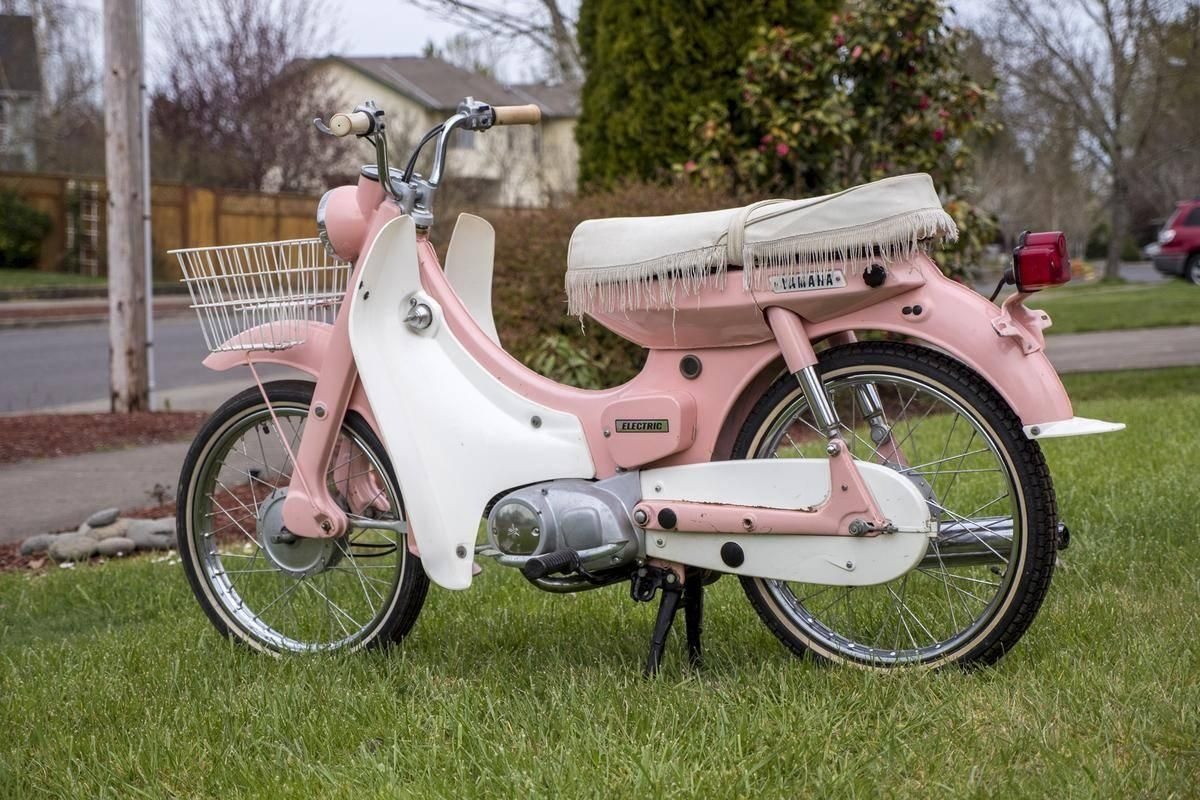
Back in the 1960s and 1970s, the environment was different. Riding had the image of mean biker dudes who rode choppers and caused trouble. As USA Today notes, women motorcyclists in the United States didn’t even hit 10 percent of total riders until the late 2000s, so seeing a woman on a bike back in the ’60s was truly rare. However, some motorcycle manufacturers saw a benefit in attracting women to bikes. Yamaha was one of these motorcycle manufacturers, and it put forth two notable efforts in getting women to ride motorcycles. Its idea? Make motorcycles that are cuter and easier to ride.
Moto Mate
The first bike that we know of that Yamaha marketed directly to women was the Lady Yamaha, which was based on the Yamaha Mate series. Underbone motorcycles were incredibly popular in Japan in the 1960s, in part thanks to the runaway success of the iconic 1958 Honda Super Cub. Understandably, seemingly every moto maker in Japan wanted a slice of the success baked by Honda.

In case you are curious, an underbone typically consists of a low-slung steel frame with a step-through design, often absurdly narrow tires, and plastic fairings that offer minimal wind protection. While not super common here in the States, you’ll find these motorcycles all over the developing world and throughout Asia.
Yamaha’s answer to the Super Cub came in 1960 with the MF-1. Then came the MJ-2 in 1962, which was similar to the MF-1, but with a bigger engine. When it came time to make a third version, Yamaha wanted to go big. Yamaha tells its story of the motorcycle that became the Mate:
“I’m riding, I’m riding, I’m riding, I’m riding…a Yamaha Mate!”—In the mid-1960s, Yamaha debuted a new moped, the Mate, along with a TV commercial for it featuring a catchy jingle. The commercial made Yamaha a household name throughout the country. Small, moped-style motorcycles were known as a practical means of transport, good for delivering packages and running other errands, and the market for them had exhibited stable growth. The new Yamaha Mate series was developed through the concerted efforts of the engineering team. Two models debuted on the market in July 1965, the 50 cc Yamaha U5 Mate and U5D Mate. Another version, the 73 cc U7 Mate, was launched in December that same year.
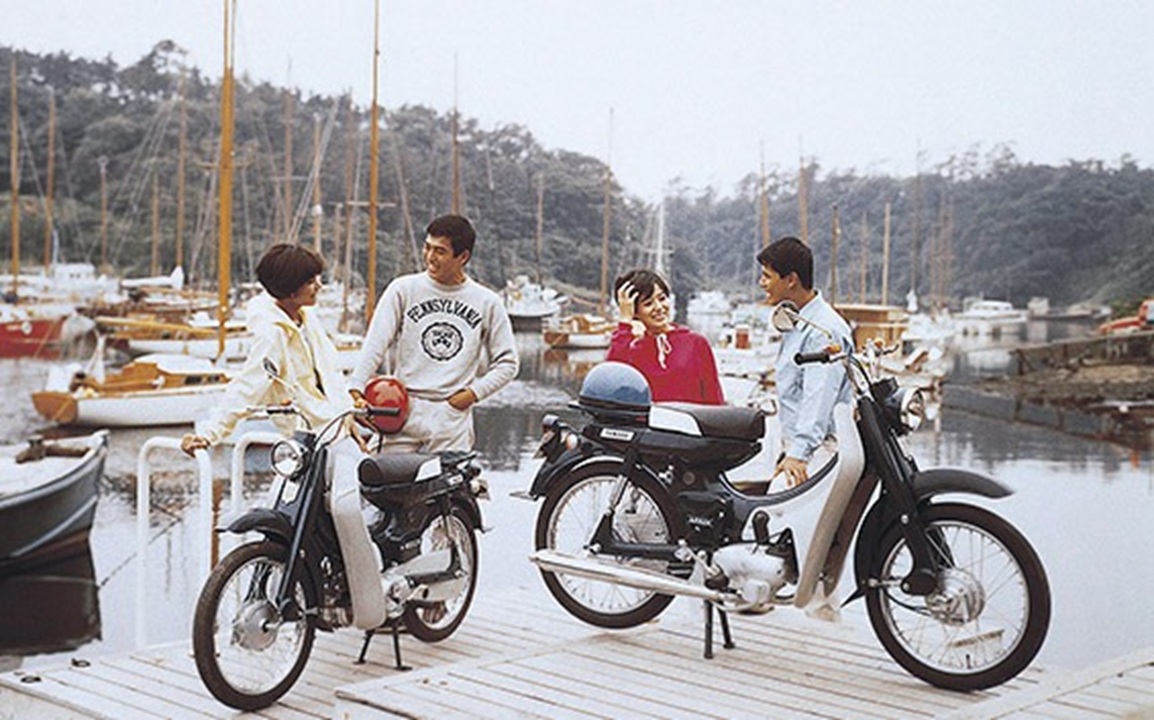
Yamaha’s Marketing Department tried a completely new approach to promoting the Mate before its launch. The department conducted a campaign to name the moped in order to fully promote its appeal, soliciting ideas from both inside and outside the company. The campaign generated a flood of responses as some 215,000 suggestions poured in. “Forte,” “Mate,” “Doll,” and “Pal” were selected as finalists, and after a rigorous judging process, the now familiar “Mate” was chosen.
A famous songwriter was asked to write the jingle for the Mate’s initial commercial.
The limited advertising budget meant only the first verse of the song could be completed, so the staff took it upon themselves to do the second and third, with some assistance from the advertising company. The synergies of coupling the resulting song with the TV commercial shot in 1967 showing a chimpanzee riding a Mate resulted in the song being widely sung by children and adults alike.
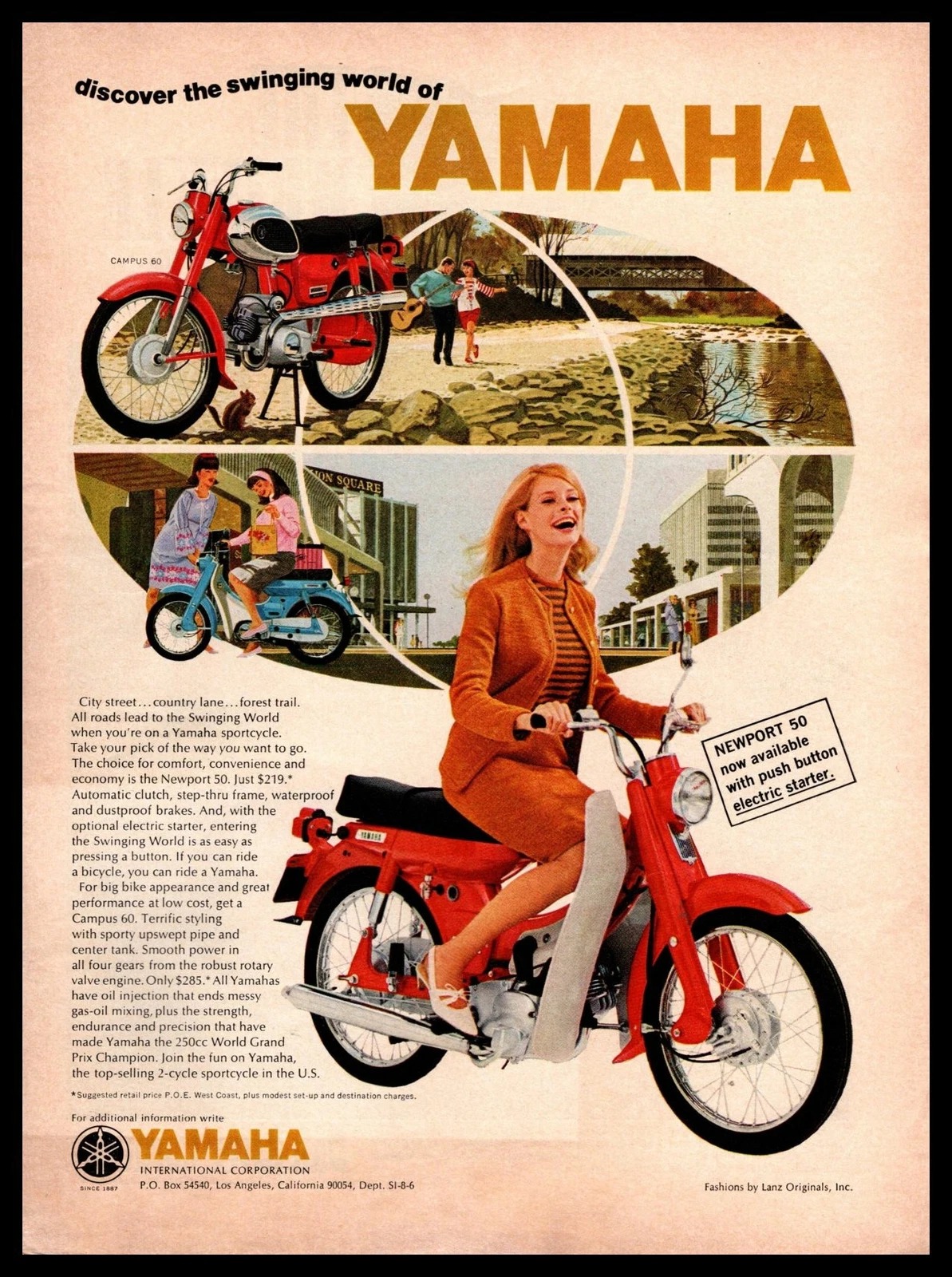
The Mate would be produced in several variants, including the extremely rare U7E in my garage, the U5 Newport 50, and the U5E. The U5E features a 49cc two-stroke 4.5 HP rotary valve single, an autolube oil mixer, a six volt electrical system, and a three-speed semi-automatic transmission. Yamaha was quite proud of its electric starters in the 1960s and 1970s. As a result, the bike’s electric start was a huge part of its marketing. Like many two-strokes, the bike still had a kick start as an alternate starting method.
The idea of marketing to women also wasn’t that new of a concept. The Yamaha U5E Newport 50 was marketed to women. Promotional materials prominently featured women straddling Yamaha underbones and having a good time. One of Honda’s most famous marketing campaigns depicted a diverse cast of people riding all kinds of Super Cubs.
For Ladies Only
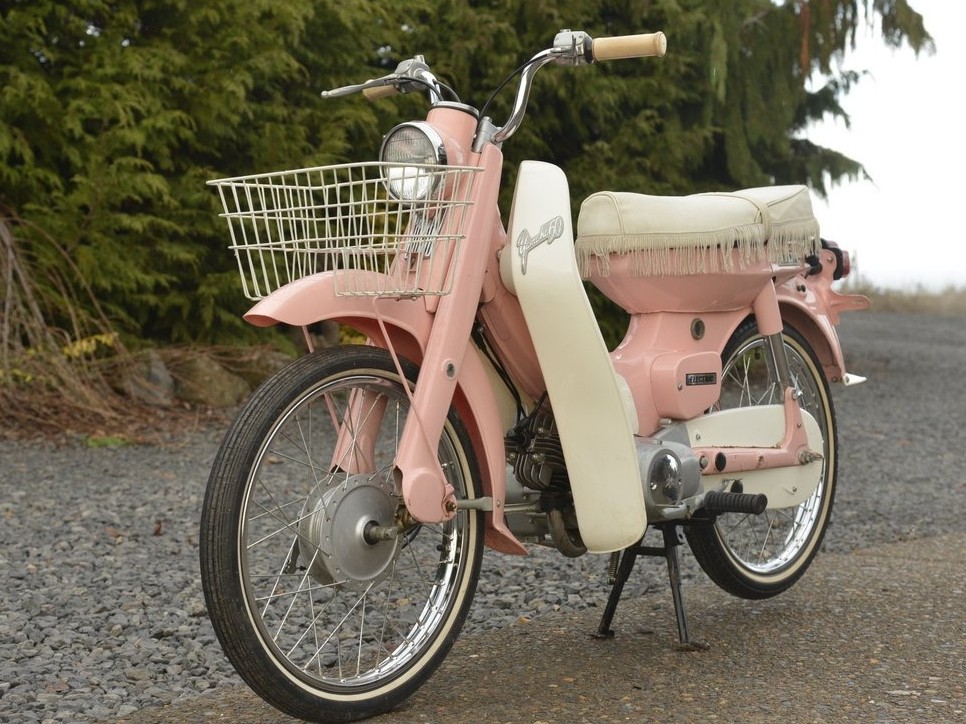
However, those bikes weren’t exactly made to directly appeal to women, and, as I noted earlier, there just wasn’t a high percentage of women in the motorcycle world back then. To try to fix that, Yamaha took the U5E and turned it into the Yamaha Lady.
There weren’t many changes made to the U5E to make it into a Pink Lady. Yamaha gave the U5E a basket, a seat with tassels, and custom graphics, then wrapped it up in bright pink paint. Everything else was the same, from the tiny two-stroke engine to the electric start. Yamaha then sent the Pink Lady out with marketing, calling the motorcycle “For Women Only.” While it’s hard to find exact data, it appears that the Pink Lady went on sale in 1965 or 1966.
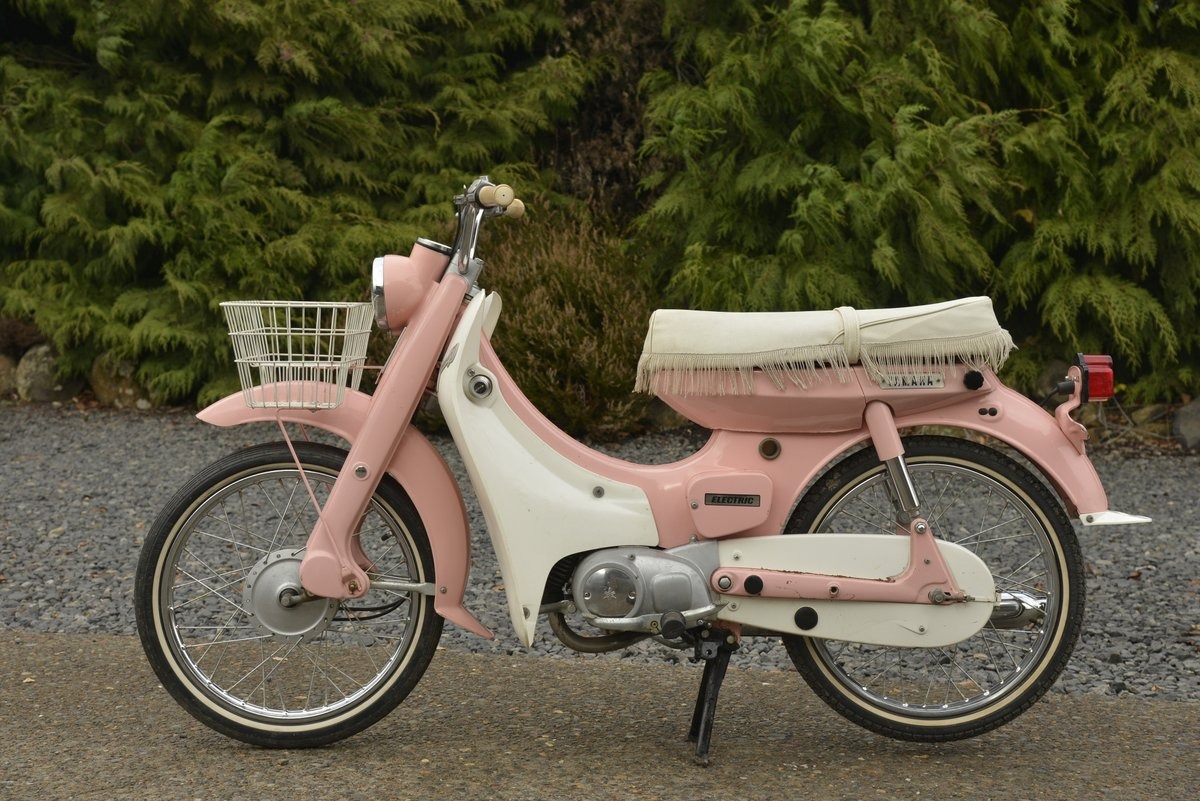
What was fascinating was that Yamaha didn’t market these motorbikes to just every woman, but specifically teenagers. According to Cycle News, in 1968, Miss Cindy LaCroix, a fashion model who had appeared on the cover of Motorcyclist magazine and Lens Magazine, rode onto the stage of the “From the Missions to the Stars” teen fashion show in California on a Lady Yamaha.
Then things got a bit wilder. In 1969, Cycle News wrote about how Yamaha started giving out Lady Yamaha bikes out to the winners of teen beauty and teen bikini pageants. One of these winners was 17-year-old Kristina Nelson, a high school junior who was crowned the queen of the Third International Bikini-Beauty Pageant. Cycle News said: When not modeling or motorcycle riding, the beautiful young queen occupies her time with Karate lessons.
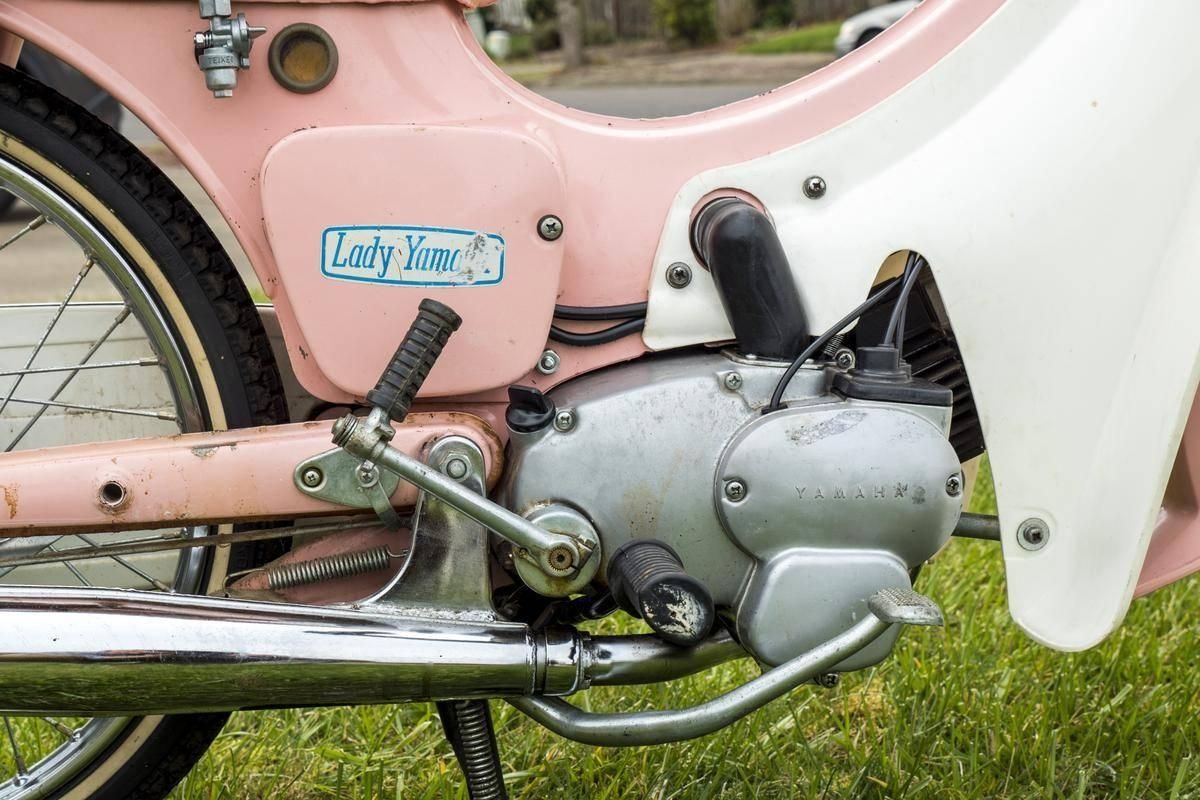
At the time, the Lady Yamaha (nicknamed the Pink Lady) was marketed as the only motorcycle on the American market that was built with women in mind. Was it a success? Hard to say. Yamaha has not kept great records about Mate sales in America. It wasn’t even able to give me a ballpark figure on sales of the U7E. What I can say is that the Lady Yamaha was a short-lived product that didn’t appear to last much longer than 1969 or so.
Perhaps what’s even weirder is that, not even a decade later, Yamaha took another swing at the whole bikes-for-women thing.
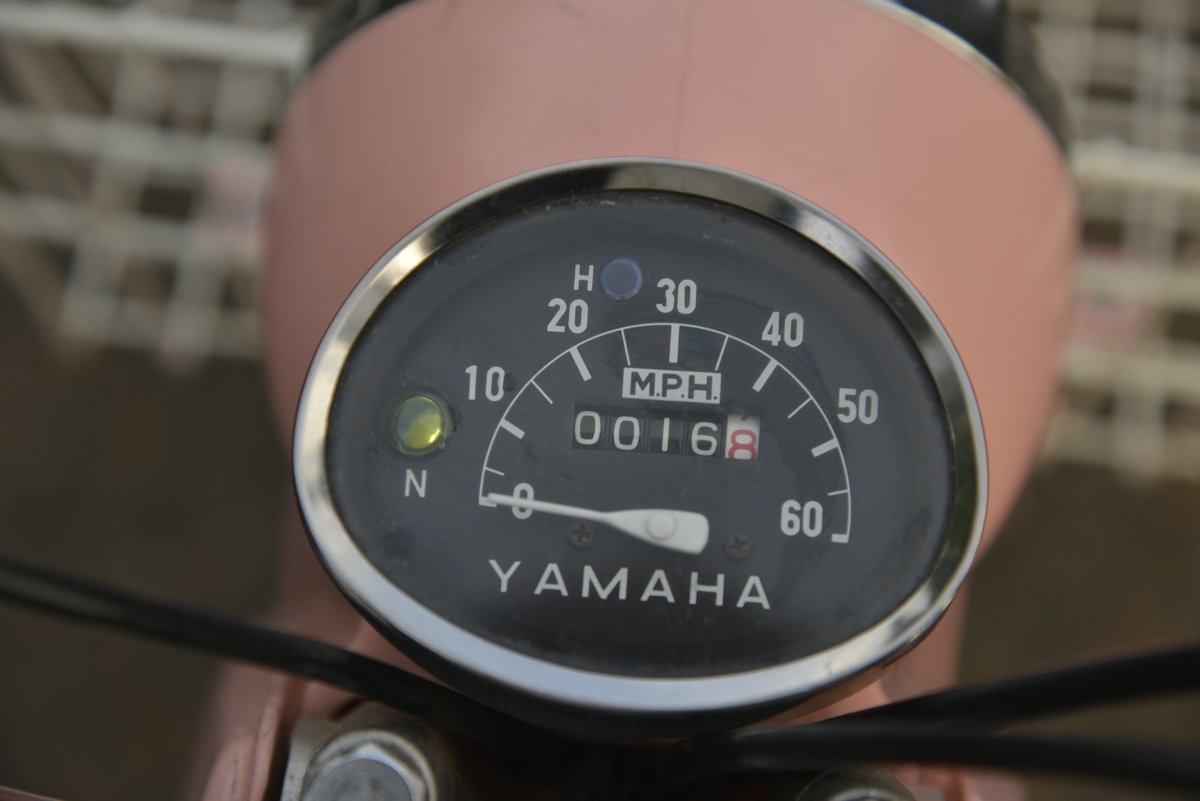
For Ladies Only, Again
Yamaha says that in the 1970s, it expected the motorcycle market to expand with the addition of new female riders. However, there weren’t really motorcycles built just for women. Yamaha thought that women would love to ride motorcycles while wearing skirts and dresses. However, this wasn’t easily possible with existing bikes because a long skirt or dress might get caught up in a chain or brake. Likewise, Yamaha felt that one thing women wouldn’t like about typical bikes was the oily, smoky engine dirtying their skirts and dresses.
So, Yamaha wanted to market to women again. But this time, the brand wouldn’t just paint a bike pink and call it a day.
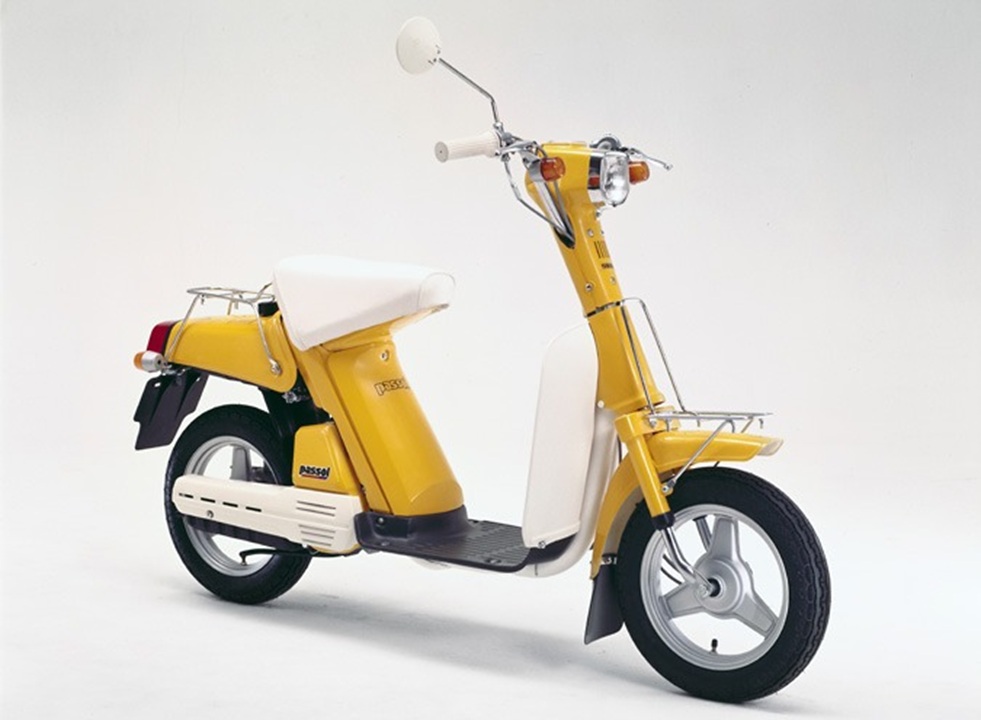
The Passol was easy to ride thanks to bicycle-style handbrakes for the front and rear wheels and an automatic transmission. It also featured a kick starter that would start the engine the first try, as well as cast wheels. The seat height was a low 680 millimeters, the moped’s total length was 1,515 millimeters, and it weighed only 45 kilograms. Being compact and lightweight made it easy for women to handle. The Passol was also economical, traveling 75 kilometers on one liter of fuel, and would help establish the “soft bike” as a new genre of motorcycles.
Yamaha succeeded in commercializing the Passol precisely because it had the technical development capability to create a product plan that prioritized design. The company developed a small forced-air engine and a single-speed automatic transmission compatible with the Passol’s compact design. It also developed a pipe frame structure, cast wheels, plastic covers, and other features that met strength standards. The cooperation of the technical departments, which worked resolutely on developing new technologies, made it possible to establish this new category of scooter.
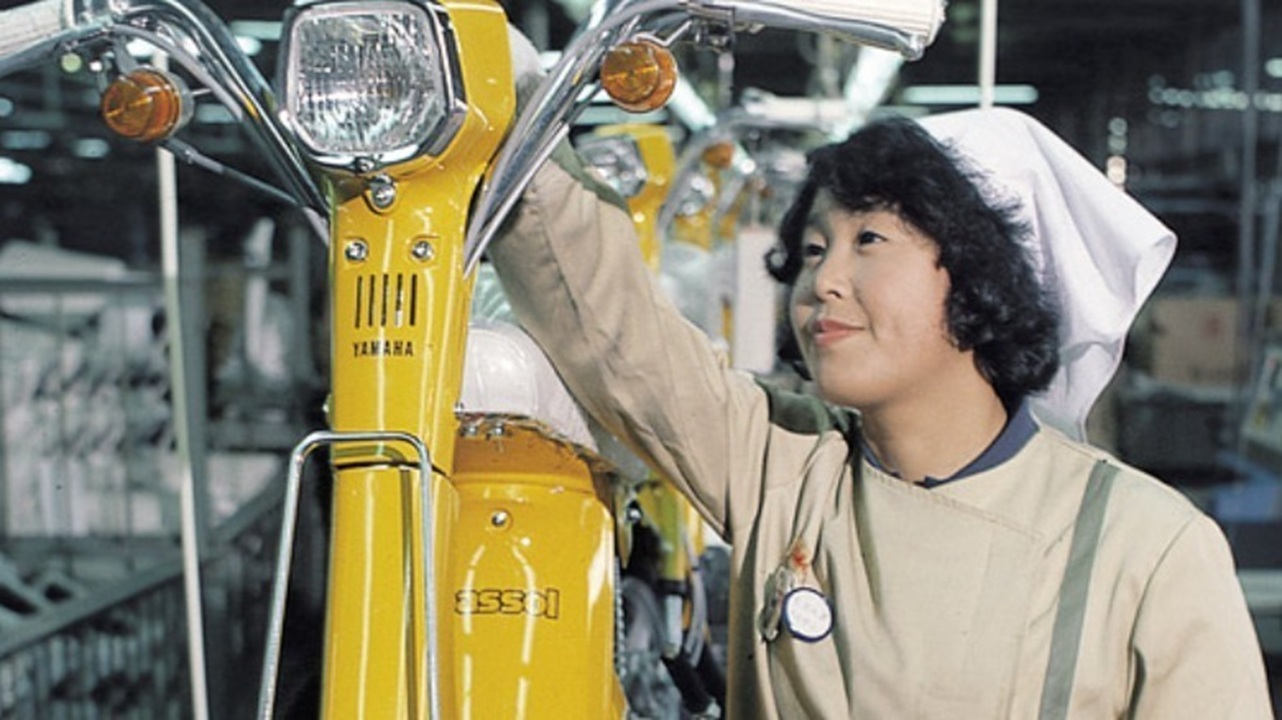
Equipped with these numerous features, the Passol went on sale in March 1977. Actress Kaoru Yachigusa was employed as the face of the Passol as Yamaha launched a large-scale promotional campaign, including television commercials, with the catch phrase “I like it because it’s gentle (easy).” The company aggressively engaged in sales promotions, holding exhibits and test riding events at places frequented by large numbers of people, such as supermarkets and department stores. At the same time, the company also held Yamaha Moped License Schools. These activities resulted in Yamaha increasing its share of the market for family-oriented motorcycles.
The Passol was an interesting little ride. Yamaha called it a motorcycle in official documentation, but it was really more like a scooter. The Passol features a step-through design with a floorboard, a 49cc 2.27 HP two-stroke engine, drum brakes, and bicycle-style levers.
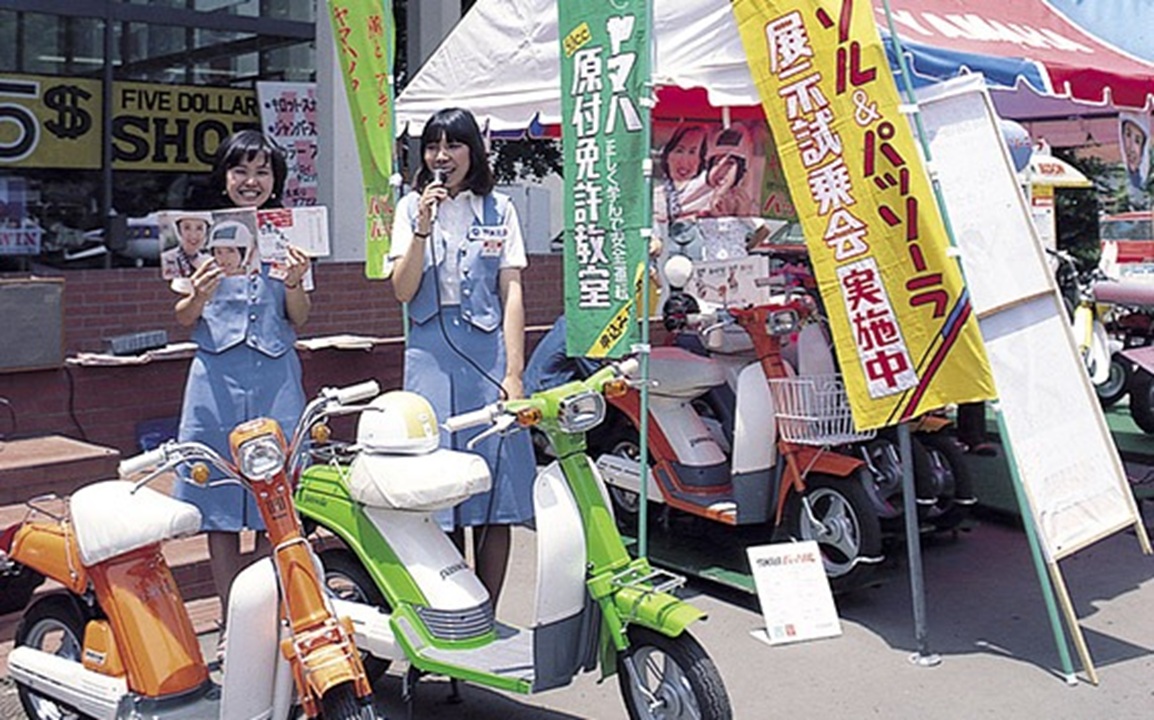
Yamaha says that the Passol was successful enough that in 1978, it launched the Passola, a Passol with 0.5 more HP, an automatic choke, a fuel gauge, and an autolube container oil level warning light. According to Yamaha, the Passol was ¥69,800 while the Passola was ¥89,800. Sadly, neither the Passol nor the Passola crossed the Pacific to the United States.
The Passol was revived in 2001, not exactly as a bike specifically for women, but as an innovative early electric scooter with 20 miles of range, a 0.78 HP motor, and a weight of only 97 pounds.
Odd And Forgotten
Ultimately, neither of these efforts lasted particularly long. While there has never been an official explanation, there could be several factors as to why building motorcycles specifically for women didn’t really work out. Of course, these motorcycle manufacturers had to overcome the idea that motorcycles were a male thing. A lot of the American women who do ride often add their own feminine touches to existing larger motorcycle designs. The late National Motorcycle Museum suggests that the women riders of the 1960s and the 1970s did the same. Today, rides like the Can-Am Ryker and Honda Navi have a lot of women owners, and they were not specifically designed for women.
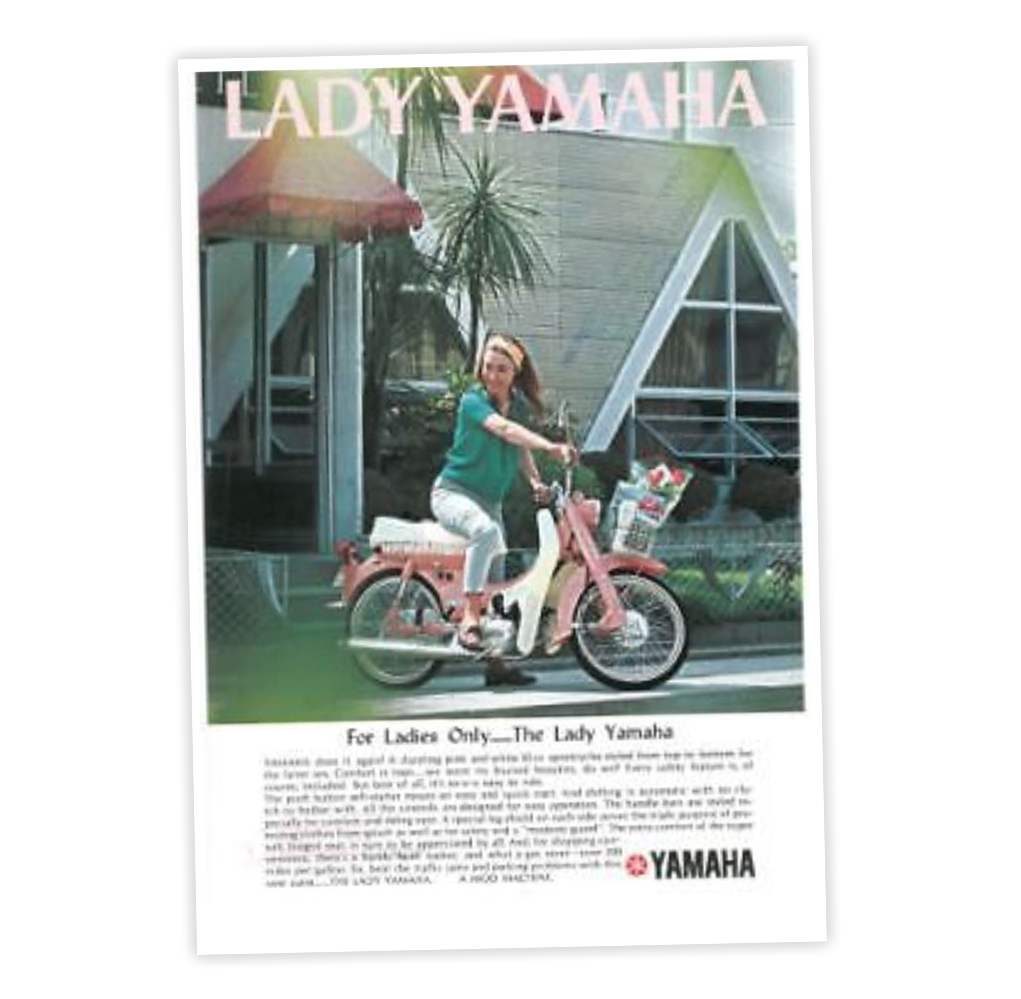
If you’re like me and you’re a sucker for pink, I do have somewhat bad news. The Lady Yamaha is believed to be super rare, and I did not find any currently for sale. These bikes do show up from time to time for sale and thankfully, the rarity doesn’t seem to suggest value. The last Lady Yamaha sold on Bring a Trailer went for only $1,500. A nicer version went for only $5,250.
Whatever the reason, these two efforts didn’t last very long; they now live on in history as a couple of those weird times when a motorcycle manufacturer tried to have a laser focus on a very specific market. Yamaha wasn’t the first to market to women, and it almost certainly won’t be the last. But at the very least, if you’re into pink and vintage bikes like I am, maybe Barbie’s vintage Yamaha might be your jam.

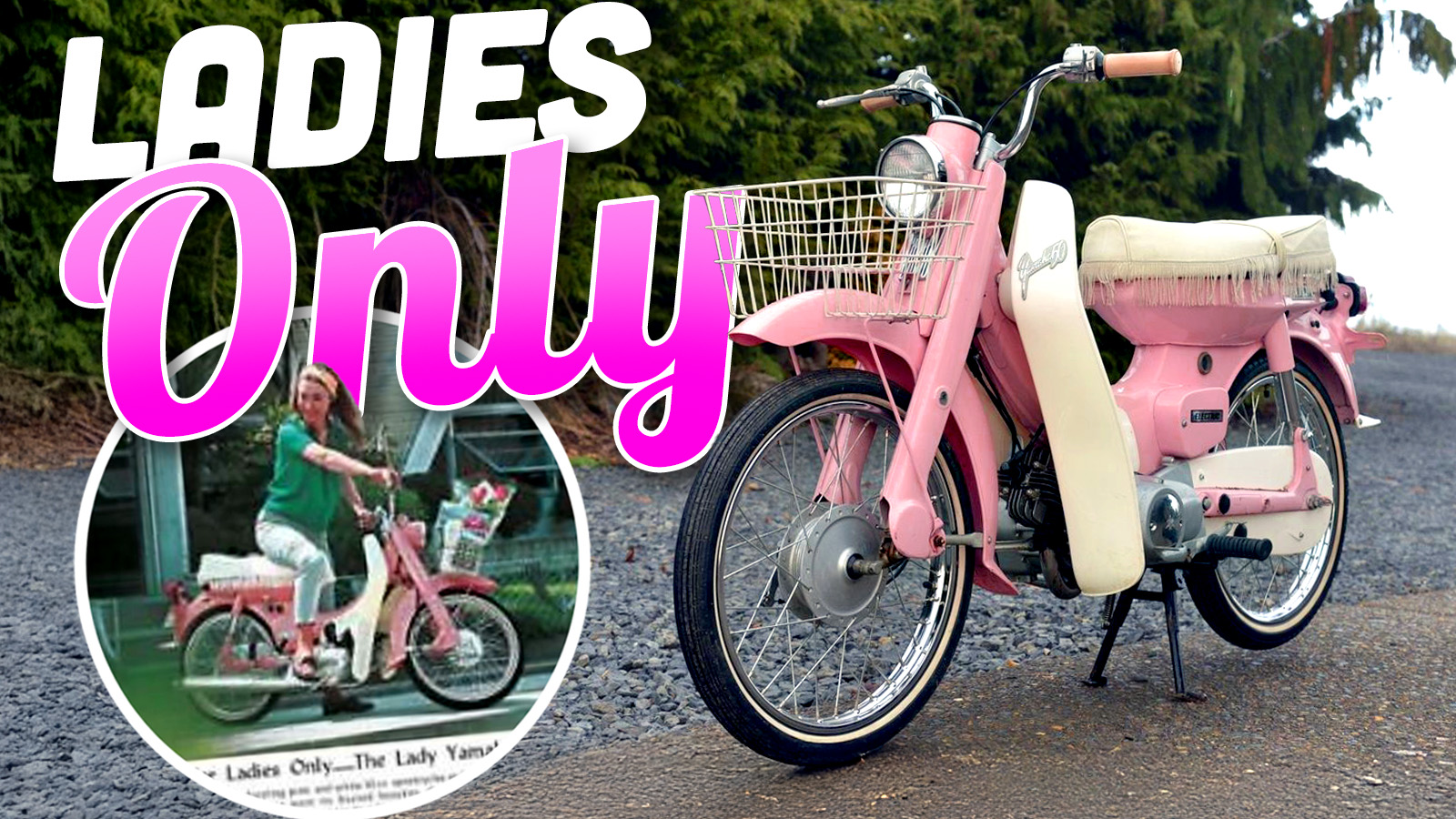



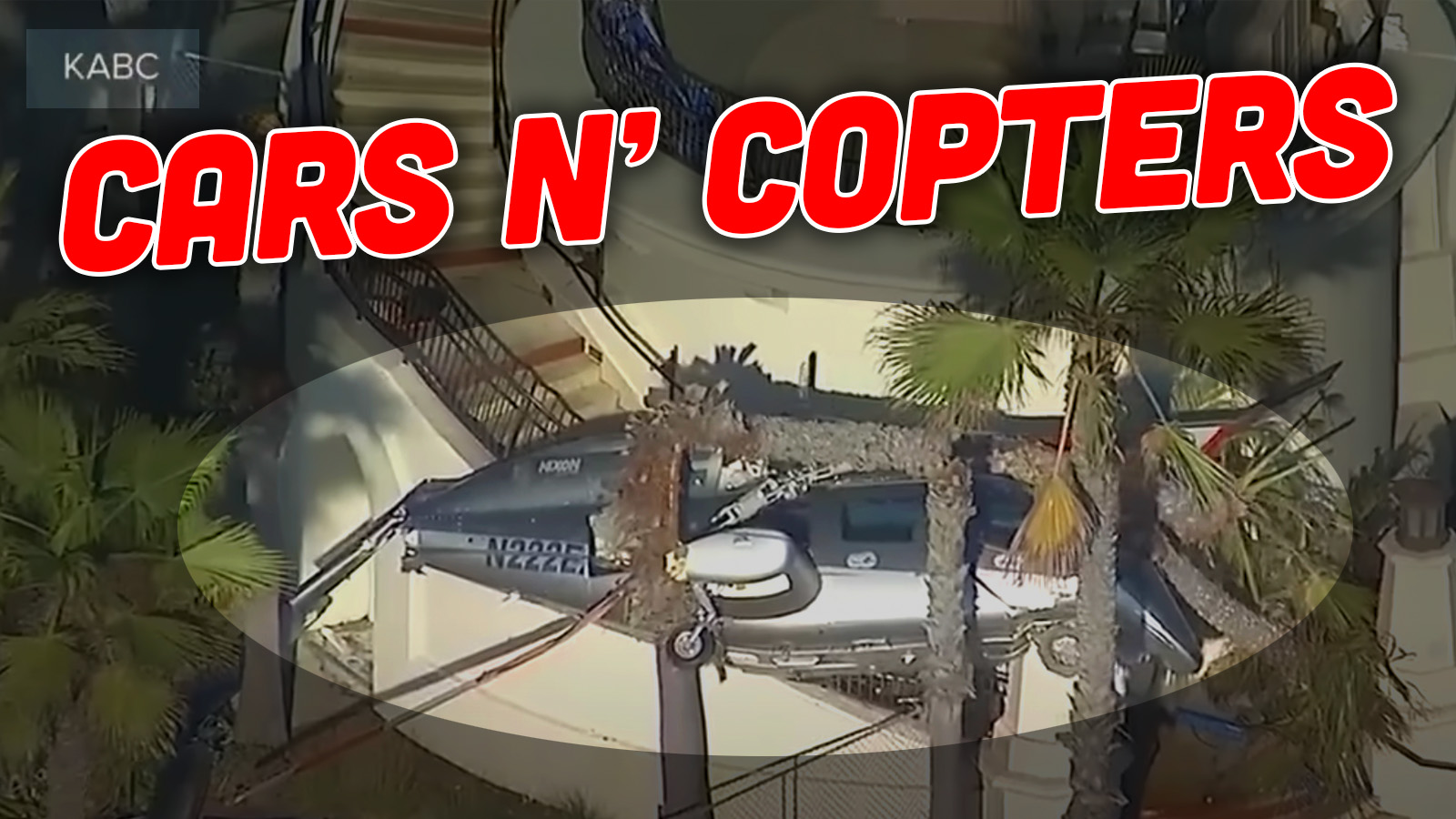
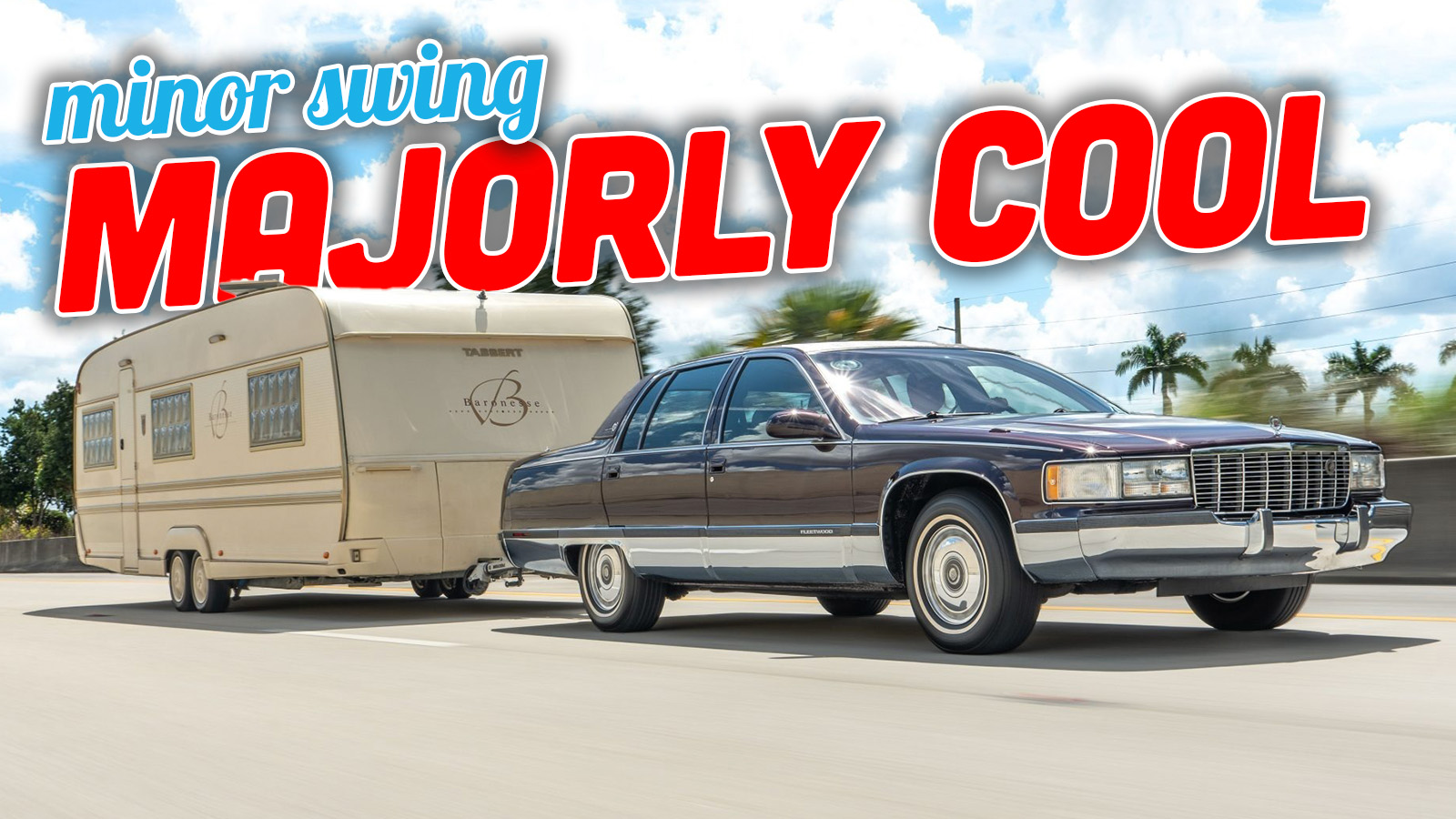

A front drum brake? Are you trying to avoid the cost of a divorce attorney? I’d never let a loved one, or even a hated one, ride on that thing.
And a two-stroke? Mixing oil and gas, instead of oil and vinegar? What were they thinking?
No wonder I’ve never seen any of these anywhere.
My wife would go for the Lady Yamaha, although it would be even punier than her Honda CM250C.
You can consider the U7E as rare for several reasons. It was offered here for maybe 2 years, and the early (pre-oil embargo) ’70s was when dealers stocked all the enduros, MXers and bigger, more powerful bikes Japan was producing. But I have one, so rare is relative.
Also, being that I’m so damn old, this article brought up a memory of a short lived NBC TV summer variety show starring starring two cute young Japanese women and a plump-ish American comic. The show was titled “Pink Lady and Jeff”.
Jeff said the young ladies were lovely people but didn’t speak English. They read their phonetic scripts and had no idea what they were saying. I think their names were Mei and Kei?
For ladies only? Sure. But I’m digging those brown hand grips.
CSC sells an electric Super Cub knockoff in yellow, blue, and green (but not pink).
https://cscmotorcycles.com/2024-csc-monterey-electric-scooter/?sku=2024-Monterey-Blue
Good news, Plastidip has a pink version. Just grab a normal Mate and a couple cans and you’re there!
*tassles not included
For something less marketing pink-washing, you should check out Volvo’s YCC (Your Concept Car), which was designed by women. From it came this choice quote;
Hey ladies*! Want to accessorize your Barbie pink Yamaha biker lifestyle? Are you tired of undesirables constantly hitting on you? How about this Barbie pink AK-47?
https://gunsamerica.com/listing?p=925910691
And the best part?
“We at Century International Arms, like many families in America, have been directly impacted by this dreadful disease. This experience has inspired us to take up the challenge. Join us today in battling Breast Cancer! 10% of Century profits from sales of these firearms will go to the National Breast Cancer Foundation, Inc.”
Buy one or two today!
*However you self identify.
DR Yet, but want one so badly! I would pride that thing everywhere.
I owned a purple Ford Probe for years. So many people called me unkind things for being a male driving a purple car. FU to every single one of them.
I guess people don’t recall Plum Crazy Challengers and In Violet Cudas.
Nissan had purply fuschia trucks in 1995. I worked for a small dealer for a few months and they had a truck sale. The purple ones were the only ones left and the one base model that was essentially the same price as the value truck package models. I think it was a special order and the buyer backed out.
Indeed! The difference being the “Probe” name being just too gay adjacent for many tough guys to countenance seeing a man driving one. Challengers and Cudas being perceived as masculine.
I suspect it may also have something to do with expectations. Like they expect to see an attractive female in a purple probe, but instead find me and get pissed. That’s said, I think gay men did enjoy seeing me behind the wheel. Natch.
I thought that might be a problem when I built a hot pink and yellow ACME rocket bike, but I was shocked to find that everyone loves it—even “bros” in Rams. Also, drivers give me far more room and courtesy, indicating to me that the closer calls on other bikes (particularly the road bike) are indeed intentional. Roger Rabbit was right: a laugh is a powerful thing.
The right shades of purple are great and I wish they more common. I always like Plum Crazy and BMW has a really nice purple right now.
It’s all about the coding and perceptions. Purple is okay when properly associated with manly things, but if you do it wrong, homophobia ensues in certain areas.
Yeah, I’m north of Boston, so that’s less of an issue than a lot of other places. In my case, I think the ACME lettering on the vertical tail fin makes it more acceptable to such people, too. That wasn’t part of the original idea (its genesis was in mocking custom bike guys who were too insecure to ride antique step through frames because they’re “girl’s bikes” by taking a step through frame and adding a top tube that was phallic without being literal), but it looked distinctly Wile E. Coyote when I looked at it after it was finished that I added the lettering.
My current hat of choice is bright yellow and I have magnets inside to allow attachment of various objects to the multiple locations. My favorite is a mini Rainbow Care Bear, which is pink of course. So for I have only received smiles and “nice hat” comments.
Not sure how this is any different than pickup truck ads showing only men.
Indeed they were. Some of their 1960s street bikes included an interesting device: a combination starter/generator. When the rider pushed the start button, the battery used the generator as an electric motor to start the engine; once it was running, the generator did its normal duty of charging the battery and feeding the lights.
In 1970, Yamaha introduced the CS3 – also called the “200 Electric”. This was a 200cc two-stroke twin-cylinder street bike, updated from the late 1960s 180cc twins. The left side cover carried a sticker that simply said ‘ELECTRIC’.
Thanks for reminding me that I need to buy a CS5 200 one day. Tell me this thing isn’t pretty:
https://bringatrailer.com/listing/1972-yamaha-cs5-street/
I was just looking at that one! 😀 It is very pretty.
Several years ago I bought a 1967 Yamaha YCS1 – one of the 180cc twins mentioned above and the ancestor of the CS5 and RD200. The plan was to restore it and get some practice in paint, electrical, etc. and maybe get it back on the road, but then the Vermont thing happened.
Good news! I recently picked up a frame with a clear title. Now the project has morphed into “swap the bits over and resto along the way”.
Back when I raced motocross, I remember there was a girl who raced in the 80cc class who wore pink riding gear and had a pink teddy bear zip tied to the back of her chest protector. And she was fast!!
In the 10s, there was a pro flat track racer named Nicole Cheza would would often sport pink leathers. The line of little girls to meet her in the paddock after the race was huge, bigger than any of the guys’.
Just want to take this time to plug the wonderful anime “Super Cub”.
For weeb riders like myself, this is our “The Wild One”.
The late 60s/early 70s were a tough time for riding in the public perception even more generally – Bruce Brown made his now-iconic movie On Any Sunday to show people that motorcycling had cool, fun things, not just outlaw bikers.
Hard to believe Honda MiniMotos were once part of a culture war. I recall an old episode of Rosanne where a guy gets the fits because someone said he rode a “Honda” instead of a “Harley”.
Growing up in the midwest, I remember fundraising gimmicks along the lines of buying tickets for a chance to wield a sledgehammer against some junker Toyota. At the same time as friends’ parents becoming almost obnoxious fans after their first Honda b/c they couldn’t believe how well made and nice it was for what they paid.
Yeah I underestimated the “Stupid Sexy Flanders!” angle of vehicular xenophobia. Guaranteed a whack-a-Prius event has been held at some point.
Damg! I had one of these! Pink, but a plain blackl seat. Bought it for $50 in a thrift store around 1979, got it running and used it to commute to work one summer. Sad to say, I repainted it “Honda Yellow”, but one time when it was still pink I ended up between two guys on Harleys at a stoplight, I expected death, but one of them just glanced at me, muttered “Well, ya gotta start somewhere” and roared off.
I’m buying one now just so I can ride it shirtless with my hairy bear body.
Well if the Moscow Circus has taught us anything it’s that the one true place for a big bear is on a tiny motorcycle.
He was a hairy bear, He was a scary bear, We beat a hasty retreat from his lair. And described him with adjectives. Gen X will remember this (and others).
https://www.youtube.com/watch?v=fNriI8SbRgc
The word “only” is hilarious when applied to a 50+ year old pink moped for $5200. A fool and his (or hers) money is soon parted for sure. How about a couple of hundred…….
Ha, a close friend of mine had one of these and sold it on BaT last year.
https://bringatrailer.com/listing/1967-yamaha-u5e-2/
That fringe around the seat is *chef’s kiss!*
Forget Apollo 11. Nothing says “Welcome to 1969, baby!” quite like a leather fringe on a brightly-painted Japanese bike.
So the rear half of the seat is known as “Riding Jerk”? I wonder if that would ever catch on.
I’ve always heard it as riding bitch, I like jerk better though.
It’s all about that inclusivity! But then again, activists have been working hard the past couple decades to ensure “bitch” applies to men, too.
That’s progress.
I like it! But then again, I think Honda’s Cub/SuperCub/etc… is pretty much the ideal form of two-wheeled transportation, and this seems a lot like that.
I’d happily ride one of these in that exact shade of pink. There aren’t enough pink cars and bikes around AFAIC.
Thanks Mercedes! 😀
I always get excited when I see an U7E come up for sale. Never pulled the trigger though… I probably don’t need more scooters. There was one a couple years ago listed nearby me in the same shade of burnt orange as my FRS- that was a hard one to pass up.
If one came up in pink I’d 100% jump on it though.